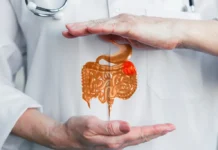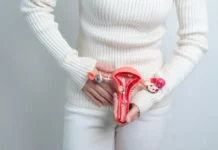Bladder infections and urinary tract infections bring discomfort, but relief can come from a blend of medical interventions and home remedies.
Bladder infections, often known as urinary tract infections (UTIs), are commonplace. They occur when bacteria enter the urethra and travel to the bladder.
The urethra, responsible for expelling urine, can become a gateway for bacteria to attach to the bladder’s walls and multiply, causing distressing symptoms such as:
- Sudden urgency to urinate
- Pain during urination
- Abdominal cramps
Effective management involves a mix of professional medical care and at-home solutions. Seeking healthcare assistance is crucial, as untreated bladder infections can escalate to kidney or bloodstream infections, which can be life-threatening.
What is Bladder Infections?
Bladder infections are the most prevalent UTIs, although any part of the urinary tract, including the urethra, bladder, ureters, and kidneys, can be susceptible to infection. Age, habits, and health conditions can heighten the risk of UTIs.
Urinary Tract Infections (UTI)
UTIs, often caused by bacteria like E. coli, can affect any part of the urinary system. Learn about symptoms, risk factors, and effective antibiotics for treatment.
Urinary Tract Infections (UTIs): Causes, Symptoms, and Treatment
A UTI is a prevalent infection affecting the urinary system, encompassing the urethra, kidneys, and bladder. Common symptoms include frequent urination, painful urination, and side or lower back discomfort. Effective treatment usually involves antibiotics.
Exploring the Urinary Tract
The urinary tract encompasses various components, including kidneys, ureters, bladder, and urethra, responsible for urine creation, storage, and elimination. Bacteria, like E. coli, can infiltrate this system, triggering UTIs.
Prevalence and Impact
UTIs are widespread, especially among individuals assigned female at birth (AFAB). Around 20% of AFAB individuals experience UTIs in their lifetime, with 8-10 million yearly medical treatments. Although more common in women, men and children are also susceptible to UTIs, causing issues in urination, flu-like symptoms, or localized pain.
The function of the Urinary Tract
The urinary tract expels waste and extra fluid in urine. Normal urination requires harmonious cooperation among urinary components. UTIs occur when bacteria invade the tract (kidneys, bladder, urethra), leading to over 8.1 million medical visits annually.
Working on the Urinary Tract
Urine creation and storage are vital functions of the urinary tract, involving kidneys, ureters, bladder, and urethra. Infections, like UTIs, arise when bacteria enter the urinary system through the urethra and progress upwards.
Risk Factors and Management
UTI risks are higher among AFAB individuals due to shorter urethras and proximity to the rectum. Risk factors include previous UTIs, sexual activity, vaginal flora changes, pregnancy, age, and structural urinary tract issues. Effective antibiotic treatment is key, as determined by healthcare professionals.
Understanding Urinary Tract Infections (UTIs)
UTIs, frequently bacterial, impact the urinary system’s various components. Learn about symptoms, risk factors, and successful antibiotic treatments for these infections.
How Do I Know If I Have a Bladder Infection?
Learn how to identify bladder infection symptoms, including pain, frequent urination, and more. Discover the types of tests healthcare professionals use to diagnose and treat UTIs.
Recognizing Bladder Infection Symptoms
Bladder infections can manifest with these symptoms:
- Pain or burning during urination
- Frequent urge to urinate
- Urgency to urinate even with an empty bladder
- Bloody urine
- Groin or lower abdominal pressure
Symptoms of kidney infection may include:
- Fever
- Chills
- Lower back or side pain
- Nausea or vomiting
- Discomfort in younger children
If your child exhibits fever or suspected UTI symptoms, consult a healthcare professional.
Spotting Bladder Infection Signs
Frequent bathroom visits and discomfort while urinating could signal a bladder infection. These infections, commonly caused by bacteria, lead to increased urination and abdominal discomfort. Early diagnosis through simple tests, conducted by medical experts, ensures prompt treatment. Chronic occurrences may necessitate advanced testing to determine underlying causes.
Initial Diagnostic Steps
Healthcare professionals begin with a physical examination and symptom discussion to assess potential UTIs. Subsequently, a urine analysis evaluates bacterial presence, pus, or blood. Urine culture identifies specific infection-causing bacteria.
Advanced Testing Considerations
Advanced testing is recommended for specific groups, such as:
- Children
- Men (potential indicators of underlying issues)
- Individuals with kidney concerns
- Women with recurrent infections or blood in urine
Advanced Tests Include:
- Cystoscopy: A camera-equipped tube inspects the urethra for issues or biopsy samples.
- Imaging (ultrasound, CT, MRI): Identifies tumors, kidney stones, and more.
- Intravenous urogram (IVU): X-ray with contrast dye examines kidneys, ureters, and bladder.
- Voiding cystourethrography: Detects backward urine flow from the bladder to the kidneys.
- Retrograde urethrography: Uses contrast dye to uncover urethral problems.
Identifying Bladder Infection or UTI Symptoms
Recognizing early UTI symptoms is crucial. Look for these indications:
- Painful, burning sensation while urinating.
- Frequent bathroom trips with minimal urine output.
- Intense, sudden urge to urinate.
- Abdominal pain or tenderness.
- Cloudy or bloody urine.
- Strong-smelling urine.
- Fever (may signal kidney involvement).
Swiftly Consult a Healthcare Professional
If you experience these symptoms in combination, consult a doctor for prompt diagnosis and treatment. Antibiotics are effective for bladder infections, providing quick relief.
Bladder Infection (Urinary Tract Infection—UTI) in Adults
Bladder infections, also known as Urinary Tract Infections (UTIs), can lead to symptoms such as a burning sensation during urination. For women, most infections result from bacteria moving from the bowel to the urethra and bladder. In men, infections often occur due to issues affecting normal urine flow, such as an enlarged prostate.
Diagnosis of Bladder infections
Healthcare providers diagnose bladder infections through medical history, physical exams, and tests. In cases of recurrent infections, additional tests may be ordered to identify underlying causes.
Treatment for Bladder infections
Treatments for bladder infections and other UTIs involve antibiotics and increased fluid intake to flush out bacteria from the urinary tract. Lifestyle changes, hygiene adjustments, or changes in birth control methods might prevent future infections.
Two types of UTIs exist: simple and complicated. Simple UTIs occur in individuals with regular urinary tracts, while complicated UTIs involve abnormal tracts or antibiotic-resistant bacteria. Antibiotics and pain relief help manage UTIs, with hospitalization required for severe cases.
Diet and Hygiene
Diet and nutrition are not believed to significantly influence the prevention or treatment of bladder infections. Consulting a healthcare professional for recommended daily fluid intake is advised to manage or prevent infections.
Symptoms of Urinary Tract Infections
UTIs can cause irritation in the bladder and urethra similar to the sensation of a cold in the throat. This irritation can lead to lower abdominal or pelvic pain, increased frequency of urination, and a burning sensation during urination. In severe cases, urine leakage might occur, accompanied by cloudy and foul-smelling urine.
Causes of Urinary Tract infections
Bacteria residing near the vagina, rectum, and skin can infiltrate the urinary tract, leading to infections. Women are more susceptible to UTIs due to their shorter urethras, facilitating the bacteria’s journey to the bladder. Factors such as menopause, genetics, sexual activity, abnormal urinary tract anatomy, and weakened immune systems can also contribute to UTIs.
UTIs are primarily caused by bacteria from the gastrointestinal tract entering the urethra. Women are more susceptible due to shorter urethras and their proximity to the anus. Preventive measures help reduce the risk of infections.
Prevention of Bladder infections
To minimize the risk of UTIs:
- Consider alternative birth control methods if using diaphragms or spermicidal condoms.
- Maintain proper hydration by drinking adequate fluids daily (approximately 2 liters).
- Urinate promptly when needed and avoid rushing.
- Cranberry supplements might offer prevention benefits.
- For those prone to UTIs, medical advice might recommend additional measures.
Preventive measures include:
- Staying hydrated
- Maintaining genital hygiene
- Addressing constipation
- Promptly urinating when needed
- Wiping front to back after toilet use
- Urinating after intercourse
- Considering alternate birth control methods for those prone to UTIs
About the Urinary Tract
The urinary tract comprises kidneys, ureters, bladder, and urethra. UTIs occur when bacteria from the gastrointestinal tract enter the urethra and move to the bladder and kidneys.
Diagnosis of Bladder infections
Healthcare providers diagnose UTIs through urine sample analysis, examining for bacteria and white blood cells. A urine culture can also identify specific bacteria causing the infection. Blood in urine or persistent symptoms necessitate prompt medical attention, including potential imaging tests.
Recurrent Urinary Tract Infections
For those experiencing frequent UTIs:
- Confirm the diagnosis through testing.
- Address potential underlying causes through further evaluation.
- Explore preventive measures, including changes in birth control methods, increased fluid intake, and post-intercourse urination.
- Hormone replacement or antibiotics may be prescribed for postmenopausal women.
Upper Urinary Tract Infections
Symptoms of upper UTIs, affecting kidneys and ureters, differ from lower UTIs. Upper UTI symptoms may include pain in the sides or lower back, fever, chills, weakness, and more severe discomfort.
UTIs can cause discomfort and inconvenience, but proper diagnosis, treatment, and preventive measures can alleviate symptoms and reduce the likelihood of recurrence. Understanding the causes, symptoms, and available treatments can empower individuals to manage and prevent UTIs effectively.
Natural Remedies for Urinary Tract Infections (UTIs)
If you’ve ever faced a urinary tract infection (UTI), you’re not alone; they’re quite common, especially among women. According to the Office on Women’s Health, more than half of women will experience at least one UTI in their lifetime[^1^]. While men can also get UTIs, they are less frequent, with only about three in 25 men encountering UTI symptoms throughout their lives. The risk of UTIs increases with age for both genders.
But what exactly is a UTI, and can it be managed at home? What are the symptoms, and when should medical attention be sought? Here’s a comprehensive guide to everything you need to know.
Who’s Prone to UTIs?
Several risk factors can increase the likelihood of developing UTIs, explains Dr. Clifton. “Patients with compromised immune systems or diabetes might be more susceptible to infections,” she states. “Notably, after menopause, women tend to experience a higher incidence of urinary tract infections.”
“Meta-analyses have also indicated that factors such as obesity, inadequate fluid intake, the use of spermicide-based contraceptives, and having a new sexual partner can predispose individuals to UTIs,” “Those who have undergone urinary surgery or have had catheters placed are also at risk of developing a urinary tract infection.”
Home Remedies for UTIs
While a course of antibiotics is the most universally effective method for treating a UTI, the following approaches might alleviate symptoms, provide relief, or even prevent future UTIs.
Cranberry Products
Cranberry products, whether in the form of supplements or juice, can be beneficial for preventing UTIs. Dr. Clifton points to a meta-analysis of 50 studies that suggest cranberry products are likely to reduce the risk of symptomatic, culture-proven UTIs in women with recurrent UTIs or those susceptible to UTIs. “However, pregnant women or those with bladder emptying difficulties may not benefit from cranberry products,” Dr Clifton adds. In cases of severe UTI symptoms, consulting a doctor to determine whether antibiotics are a better option is recommended.
Cranberry juice’s potential in preventing and treating UTIs lies in a compound called A-type proanthocyanidins, which can hinder bacteria from adhering to the bladder wall[^3^]. As the risk of side effects associated with cranberry products is low, they are worth trying.
Probiotics
Probiotics, live microorganisms that can enhance individuals’ health, might aid in preventing UTIs by impeding the ascent of other infectious organisms up the urinary tract, Dr. Clifton suggests. While the literature doesn’t conclusively establish a lower rate of UTIs among those taking probiotics compared to a placebo, there’s still potential benefit despite limited research.
Probiotics are available in supplement form and can also be found in foods like yogurt and sauerkraut.
Hydration
Increasing fluid intake could potentially help “flush out” urinary tract infections, according to Dr. Clifton. “While a few limited studies have indicated reduced UTI rates in the short term, long-term data is lacking,” she notes. “Nevertheless, if there are no medical contraindications, this low-risk strategy could be considered.”
Nonsteroidal Anti-Inflammatories (NSAIDs)
NSAIDs can’t directly treat or prevent UTIs, but they can alleviate symptoms. Dr. Clifton explains that NSAIDs have been employed to manage inflammation resulting from urinary tract infections. “Although the literature doesn’t necessarily indicate that these medications treat UTIs themselves, they might help alleviate inflammation and improve symptoms,” she says.
Urinary Tract Infection Treatment with Antibiotics
If UTI symptoms persist for more than a day or two, it’s vital to consult a doctor, even if home remedies are being used. Though the efficacy of home remedies for treating UTIs is not extensively studied, the Centers for Disease Control and Prevention (CDC) suggests antibiotics as a safe and effective treatment option for most individuals.
“Urine culture tests play a crucial role in determining the appropriate antibiotic for treating symptomatic UTIs,” explains Dr. Clifton. “These tests identify the bacteria causing the symptoms and highlight antibiotics suitable for treatment.” She adds, “Given the growing resistance patterns of bacteria, this test is increasingly essential to ensure the bacteria are effectively treated and to guide providers toward using antibiotics with fewer side effects or a more convenient administration route.”
Although some cases may necessitate prolonged antibiotic treatment, uncomplicated UTIs should typically clear up within three days of starting antibiotics. “For patients experiencing their first UTI or multiple recurrent UTIs, providers might prescribe antibiotics without a urine culture,” Dr. Clifton notes. “However, if symptoms persist post-treatment, further urine testing should be conducted.”
Urinary Tract Infection Prevention
To prevent UTIs, the CDC recommends urinating after sexual activity, maintaining adequate hydration, favouring showers over baths, minimizing douching, and teaching girls to wipe from front to back during toilet training.
Doctors can also prescribe medications to prevent UTIs. Dr. Clifton adds, “Topical vaginal estrogen is a frontline therapy for preventing uncomplicated UTIs in perimenopausal and postmenopausal women.”
“Methenamine hippurate is a prescription medication used to prevent UTIs in individuals without urinary tract abnormalities,” she continues. “It’s particularly beneficial in the short term and doesn’t appear effective for patients with neurologic bladder issues.”
When to Seek Medical Attention
While some UTIs may resolve spontaneously if symptoms persist despite hydration, a medical evaluation is warranted. “If symptoms are severe or accompanied by fever, seeking medical evaluation is important,” she emphasizes. “Individuals with recurrent UTIs or men with UTI symptoms should also seek medical attention.”
If a UTI is confirmed, the doctor will typically prescribe antibiotics. If you wish to continue supplementing with home remedies, it’s advisable to consult your doctor for guidance.














